

Mood - Dealing with Depression and Negative Thoughts
Many people who have chronic pain become depressed. This does not mean
that they were a depressed person to begin with. For most people, it is quite
common that their chronic pain triggers depressed thoughts and feelings.
One of the common things that happen is that our thoughts become more
negative. This chapter covers common thoughts people with chronic pain
often have and how to deal with those types of thought patterns.
This chapter also discusses:
• How to recognize negative thought patterns
• How to challenge negative thoughts
• How to change negative thinking by taking control of what you can in your life
Click on the video to learn more
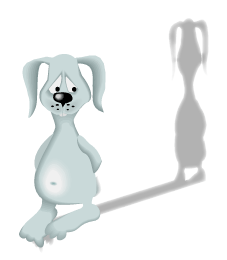
Goals

Learn
About how to replace negative thoughts with positive thoughts
How to use positive self-talk
The exercises and watch the videos for this chapter


Read
Do

Goal
Replace negative thoughts with positive ones
PACE - Picking a Problem
-
Introduction



It is time to do some detective work and clarify one of your concerns that you would like to work on. This is the 1st step of PACE!
The information in this section fits most situations, but what you are going through may be different. If the doctor or nurse tells you to do something else, please follow what they say.
Click on the video to learn more.


I can’t cope my pain. It is hopeless!


Why me? What did I do to deserve this?
My pain is always there, I don’t know how changing the way I think will help with anything.
I just can’t see the bright side of things anymore
Sometimes I just don’t want to get out of bed in the morning because I know my day is going to be filled with challenges I would rather not have to deal with.
On days when my pain is bad, I just can’t think of anything except my pain

-
The mind-boy connection

The way you think and feel about something will affect what you do or don’t do.
That’s the mind-body connection! It may seem as though many of the things
happening to you are out of your control, or that there is not much you can do
to help. Thankfully that’s not true!• Your outlook on your experience can make all of the difference
• It may seem overwhelming to think about, but there is always something
you can do to make things better• A positive attitude is the first big step in keeping yourself healthy
This chapter offers strategies to help you cope and keep you strong.
Helping you cope with negative thoughts is not just something ‘extra’ that your care team does. It is an important part of treatment that works hand-in-hand with medication and other medical treatments. Click on the video to learn more!
It may be difficult to imagine thinking positively when suffering with chronic pain, but having negative thoughts can destroy your feeling of hope. Making an effort to look at the positive side of negative situations can really make a difference in your own life as well as others around you.
“I can do this!”
“This is going to be terrible...”


-
Coping with chronic pain
Coping is what we do to figure how to deal with a problem. Two people might experience and cope with chronic pain very differently.
In order to understand coping we need to know that there is an important relationship between the mind (what we are thinking, how we are feeling) and the body (how we react, what we do).
We also need to know that how we think has a lot to do with coping and how much stress we feel.
Hope is like a bird that senses the dawn and carefully starts to sing while it is still dark – Anonymous
How people cope with chronic pain depends on many things like:
• Past experiences with pain and sickness
• Support systems like family and friends
• Relationships with doctors and other medical staff
• Faith, religion, and spirituality
• Personality styles
• Emotional and mental health
When living with chronic pain you may have thoughts of hopelessness, anger, and grief. These make it hard to cope. You might see things as terrible, overwhelming, challenging, or manageable.
How you view these events has a lot to do with how hopeful or optimistic you are about our ability to deal with them. If you think that an event is absolutely terrible and terrifying, and that you can’t deal with it, then it will be harder to find ways to cope. These thoughts from the mind contribute to feelings of stress in the body.
In the picture below, COPING is the hammer that smashes pain related problems. The more we use coping strategies the less control pain has over us. The problems may still be there, but they don’t overwhelm you in the same way.




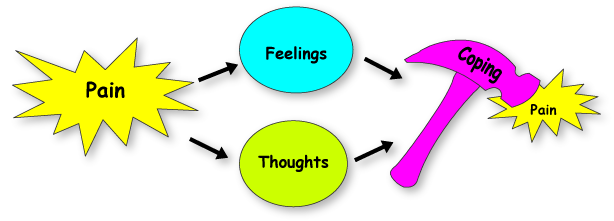
-
Negative thoughts and pain
Negative thoughts can make your pain worse. Worrying can lead to:
• Tense muscles
• Headaches
• Bad mood
• Avoiding places and activities you used to enjoy
The way we think and feel about pain influences how much pain we are in. For example, if we react to pain by feeling very negative, we are more likely to feel distressed by pain.
This chapter will help you learn how to turn negative, unhelpful thoughts into positive ones and help decrease your stress and overall pain levels.
There are three important steps in changing negative thoughts into positive ones:
1. First of all, you need to RECOGNIZE that you are having these thoughts in the first place and that they are not helpful to you. Thinking about thinking isn’t always easy but it can be a powerful tool!
2. Next, you need to CHALLENGE negative thoughts. This means more than just saying ‘NO’ to a thought. You may need to ask yourself a question such as, “how true is this?”
3. Next, you need to THINK of a way to change your thoughts. Depression can distort thinking and make you feel even worse. Many people have found that they feel much better once they start thinking more optimistically
Click on the video to learn more!Here is an example:

RECOGNIZE
I started paying more attention to my thoughts and have noticed that these are often negative
CHALLENGE
Now that I have recognized (or noticed) my negative thinking, I need to reflect on how true these thoughts are
THINK
I can see the most of my negative thoughts are not true, that I automatically think like this without really believing it. I now have to work on ways of changing my negative thoughts into positive ones
-
Negative thoughts can lead to a vicious cycle
How negative thinking can affect us:
Another way of looking at things:

I can't handle it!
Feel bad.
Don't do anything about it


I can’t handle it!
I CAN deal with it if I plan what I do
Planning and pacing



Feeling good
-
Thoughts can be...
Please click on the image below to see a list of different types of thoughts most people have experienced at one point or another in their lives. This may help you identify some of your own thoughts when you are working on recognizing, challenging and thinking of alternative ways of looking at situations.

-
Thoughts and feelings
Everyone experiences unwanted negative thoughts that affect their emotions
and how they feel about themselves. The problem with those types of thoughts
is that they can spiral out of control and make you feel even worse.The way that we think and choose to look at our situation impacts the way
we feel. You may feel:• Overwhelmed
• Fear and anger
• Pessimism
• Hopelessness – “Why did this happen to me?”
You may even start to spend more time alone and avoid friends and family. Avoiding people creates a barrier between you, your friends, family, and health professionals who could offer real help.
How I feel
Thoughts and feelings influence coping:Coping includes ideas and plans that you use to deal with the thoughts and
feelings you have about chronic pain.When coping works problems seem more manageable; unfortunately, there
are also coping choices that can hurt us or others. “Negative” coping creates
more problems.For example, heavy drinking, withdrawing, and hurting others when you’re angry all add to the original problem. People living with chronic pain often say that they find it easier to feel hopeful when they have a partner or friends and family to share their feelings with. For those who do not have strong social support, it can be harder to cope and feel hopeful.
What do I do to get through this?
The way negative thoughts affect our mood can become a vicious cycle.
Positive thoughts can
• Improve your mood
• Improve how you feel
• Turn a negative situation into a positive one
For example, a person might think – I sure don’t enjoy my daily
walks because they increase my pain. This person could turn it
around and say “I don’t enjoy my walking or other exercises, but I
am sure grateful that there is something that I can do to help
manage my pain in the long run.”This is an example of a positive thought. Those types of
thoughts help you feel less stress and tension.Thoughts can affect us in our everyday life. Take a look at the following example of how negative thoughts are changed into positive ones. Notice the difference on how this impacts a whole day.
Negative Thoughts
= Feelings of failure
= Feelings of achievement
Positive Thoughts

Chronic Pain can lead to
Feelings of stress, anxiety and tension
Take a walk
Call family, friends for support and talk to pain clinic staff to get more information and help
Block negative thoughts with distraction, meditation or reading a book
Try a physical activity to relax
Take control over negative thoughts
Take control over negative thoughts



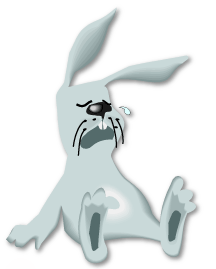
Pessimistic
Fearful
Angry
Hopeless
Grief
Hopeful
Optimistic
There are just so many things to remember; I can’t possibly learn all of this!
I’m scared that things will never be the same
Why am I going through this when I didn’t do anything wrong?
There is a lot of information to learn about chronic pain, and there are a lot of health professionals who can help me out
I don’t think I can go through this!
I don’t feel like I can enjoy life anymore
I will get through this and I feel that it will make me stronger








Negative thoughts:
You may start thinking:
I’m very sick
I’ll never be pain-free again
Depressed mood:
Feelings of stress, anxiety and tension





Morning: “I can’t cope with my pain and I’ll never get anything done today.”
Daytime: Stay in bed all day
Evening: “I didn’t accomplish anything today. I’m useless.”
Morning: “My pain is really bad today. I’m really going to have to stick to my plan if I want to get anything done.”
Daytime: Work on goals using prioritizing, planning and pacing.
Evening: “I took a short walk, completed one chore, and did my relaxation exercise today”
-
Depression
Depression is a serious medial illness. It can be described as a
pessimistic mood accompanied by a lack of activity and feelings of
sadness, despair, discouragement, hopelessness, worthlessness,
inadequacy, and helplessness.All of these feelings can really interfere with your daily life.
The following are common symptoms for people who suffer from
depression• Miserable or irritable mood
• Difficulty concentrating
• Irritability and anger
• Fatigue
• Feelings of worthlessness
• Sleep problems
• Appetite problems
• Social withdrawal
• Restlessness or slowing down
• Decreased interest or pleasure in activities
• Thoughts and dreams of death
If you lose hope, somehow you lose the vitality that keeps life moving. You lost the courage to be, that quality that helps you to go on in spite of it all. – Martin Luther King Jr
Some people who have chronic pain may develop depression because they feel totally controlled by their pain. There are things you can do though, to help feel like you have some control over your pain.
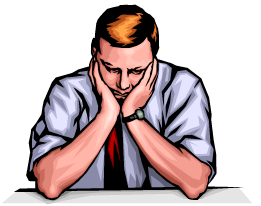


-
Spirituality
Spirituality is a very personal issue for many people. It can be a tropic
that some people are not interested in, but others may find that it plays
an extremely important role in their lives.Past studies have shown that many people in health care settings have
spiritual needs that they feel are important. There is also some evidence
that supporting a person’s spirituality can enhance coping, increase hope
and acceptance, and in some cases, recovery from illness.When we question why something bad has happened it is natural to
search for spiritual answers. Spirituality can be influenced by our family, culture, religious traditions, and especially our own experiences those of the people around us.One person has described spirituality as ‘Whatever or whoever gives ultimate meaning and purpose in one’s life that invites particular ways of being in the world towards others, oneself, and the universe.’ (Wright, 2004)
There are no easy answers to these ‘Why’ questions. Our experiences often don’t make sense to use until we have had some time to reflect on them.
Many people find that their views about life are challenged during the course of a serious illness in their lives.
Sometimes people feel like their lives have been turned upside down and they don’t know what to believe anymore.
Some people find that their beliefs change and some find that their beliefs deepen.
Some people believe that everything that happens to them happens for a reason. This can be very helpful in coping with difficulties. However this is not a simple process. It may take a long time to figure out what the purpose of a specific experience is. It might be helpful to talk with trusted friends, spiritual leaders, pastoral care workers, or others who are experiencing similar life events. These people can help make sense of what is happening.

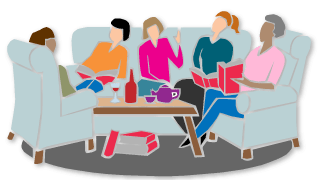

-
Myths and facts
There are many common thoughts on depression and it is not easy to know which ones are true and which ones are false. You may have heard certain things about depression or you could have made your own observations about it. Relying on false information can be serious and may lead to dangerous situations.
Please see the following list of common thoughts on depression. In the box next to it see whether that statement is true or false. You might be surprised about certain answers. It helps to look at the explanation box to see why that common thought turned out to be either true or false.
Click on the icon to see a list of myths and facts about depression

-
Statistics
The way we think and feel plays an important role in our lives. It is not uncommon for individuals to have had negative thoughts or even experience depression during hard times. Take a look at the following statistic findings on depression, you might be surprised!
Did you know?
Approximately 8% of adult Canadians will experience a major depression at some point in their lives
Depression continues to be Canada’s fastest-riding diagnosis
121,000,000 people across the world suffer from depression
80% of depressed people are not currently having any treatment for their depression
-
Example

Chris picks a problem to work on
I can’t help but think negative thoughts when I am in pain. Sometimes
I feel so down that I end up staying in bed all day. I’m feeling tense and
restless, thinking of the things I used to do in the past when I was
painless. Before I know it, my pain gets worse and then I feel more and
more depressed.Family members often tell me that I bring them down with my negative attitude, and that makes me sad. I just find it so hard to see the bright side of things, because I feel that I have been ripped off in life with this constant pain. At the same time, I feel depressed that my pain is now making my whole family suffer! Something needs to change!

-
Worksheet
Click on the icon below to access the worksheet for this section.

PACE - Acting Upon the Problem
-
Introduction
Now that you have picked a problem to work on it’s time to decide what to do.
Ready... set... action!
In this section the second part of PACE, we will look at things you can do in your everyday life to help you deal with depression and negative thoughts.

-
Other ways to look at things
Sometimes we get caught into thinking a certain way. This is
normal, we all do it!When we are faced with a difficult situation or a problem, it is
hard to look on the bright side of things. This chapter is not
about trying to deny difficulties, it’s about trying to change the
way we may look at things when difficulties/problems do happen.Click on the video to learn more!
Here are some questions you can ask yourself to help challenge your thoughts
• What evidence do I have to support this thought?
• Is there another way of looking at this situation?
• Am I setting myself an unrealistic or unobtainable standard?
• Am I forgetting relevant facts or over-focusing on irrelevant facts?
• Am I thinking in ‘all or nothing’ terms?
• Am I overestimating how responsible I am for how things work out?
• What if it happens? Would it be complete disaster?
• Am I underestimating what I can do with a problem situation? (Think about a past experience where you coped well)
• What would you tell your best friend if they were in the same situation as you?

-
Challenging negative thoughts




This hurts but I’m not going to let it get in the way of my life


This it tough but I have been making progress
I have a plan in place in case things start to feel uncontrollable
I can handle this. I just need to get through this part of my daily plan

Some thoughts can become like habitsThey get more and more negative
You may ask yourself questions like “Will my life ever improve?”
This is a very NORMAL reaction to chronic pain
Because thoughts are often quick and seem automatic, most people don’t even notice them.In some situations, it is important to slow down and pay attention to your thoughts and your way of thinking. Once you have done that, you can challenge your thoughts and try to change them.
• Think of what triggers your negative thoughts
• Ask yourself questions about why you think certain things
These questions will help you understand why you are feeling the way that you are and it will help change your negative thoughts into positive ones.
Here are examples of positive thoughts you can say to yourself during difficult times
Think of words, phrases or thoughts you may have had recently. Click on the icon below to access an exercise sheet on challenging negative thoughts. If there is anything negative, please write these down in the green box, and try changing those thoughts into positive statements in the yellow box.Positive ways of thinking or talking
Negative ways of thinking or talking
“I’m going to be in pain forever”
“I might be in pain if I try that”
“I never do anything right”
“I’ll never be able to go to work again”
“My pain may not go away but I can choose how I react to it and make the best of life”
“My boss said he was quite happy with my work lately”
“I can’t do it”
“I’m stupid”
“Nobody likes me”
“I won’t be able to go to cope with a flare up when I have one, and I know I’ll have one”
“I can’t do things the way I used to but with planning and pacing I know I can do more”
“Yesterday I helped a friend solve a problem and that made me feel good”
“I’ll pace myself and start slowly and work my way up to going to a full day of work”
“I might have pain but if I pace my activity, I will have less pain and achieve my goal”
“I do have a wonderful family that cares a lot about me”
“I’m a hard worker and I know if I put my mind to it and follow my plan, I can do it”

-
Coping with negative/painful thoughts
Over the next few pages you will find many different strategies to help you
cope with negative/painful thoughts. Note: Some of these may be more
helpful than others.Self-talk: Often, people talk to themselves and that can help them calm
down. Some people find it helpful to use a mantra. This is a word or
sentence repeated over and over again.Just saying words in our minds or out loud can help calm and centre us
during tough times. The sayings can help keep worried feelings out of your head and help cut down on anger or anxiety. This is also called ‘self-talk’.Some examples are
• “Everything will be okay”
• “I can get through this today”
• Simple repeating ‘hope’ in your head
Perspective & finding a balance
Finding a positive perspective can be very hard when you have a chronic
medical problem such as chronic pain.• Being positive does not mean that you convince yourself that
everything is perfect and that there really is nothing wrong.
Sometimes it means taking a step back whenever things are starting
to feel overwhelming and looking at the bigger picture.• Some people may think of the good times to come in the future.
• Others will look and see how far they have come and remind themselves of all of the difficult things that they have already gone through and dealt with
Team thoughts
Sometimes, it may be too hard to change negative thoughts or
come up with positive ones. It may help to meet with friends or
family and ask them to help you with this. Maybe they can share
their coping strategies with you or brainstorm new ideas.Blocking negative thoughts
It can be hard not to feel as if worries and other negative thoughts take over time to time. After all, chronic pain is a serious problem and it’s important to take this seriously.
Some negative thoughts may be “this is my fault”, “I feel like giving up”, or “I can’t deal with pain anymore”. However focusing too much on the negative is not health for anyone. Energy levels drop and stress escalates when this happens; leaving that person at risk for serious depression or anxiety.
Look at the list below for ideas of things to do when negative thoughts take over
• Silently yell ‘Stop!’
• Imagine a big eraser wiping worries away, or replacing them with positive thoughts
• You can also block negative thoughts by distracting yourself by calling a friend or planning to participate in an upcoming event

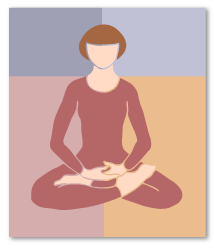

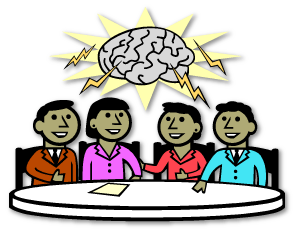

-
Positive thoughts
Take a look at the following examples of how people have used positive thinking during difficult situations
Miranda
“Ever since the doctor told me that the pain I have been feeling all these years is called chronic pain syndrome, I can feel like I can cope with it much better than when I didn’t know the name for it. Now I can ask for more information or read about it
when I need to, which
gives me more control
over my own situation.Helen
“I read the newspaper and watch the news regularly and they often bring up new medical discoveries of different types, I can’t help but be optimistic that maybe someday... there will be
something that will help me.”Richard
“After my accident, the doctor told me that my back might never feel the same way again. I felt quite discouraged, but then I started to remember that I’d coped with serious things before. I started to believe that I could deal with this too. I’d get thought it.”
Chris
“Sometimes I feel really helpless and wonder about what’s going to happen 5 years from now. I remind myself that I have the most control over how I spend
my time today. I don’t want
to neglect right now
because I’m scared of
tomorrow.”



-
Fighting feelings of helplessness
To fight feelings of helplessness
Learn as much as you can about chronic pain and the specific cause of
your pain. This helps you feel more control and less uncertain about what
is happening. Try to get information from sources that your doctor
suggests rather than on TV or the internet (where information may not be
accurate).Feel free to ask lots of questions
Ask for diagrams and pictures if that helps you too. Doctors and other professionals on your pain management team will be happy to help you.
Give yourself permission to express feelings
It is natural to feel very angry about your illness.
It is very important that you express these feelings but you have to be careful to do it in a constructive way. Sometimes you may express this anger by telling at your spouse or your children and then feel guilty for doing so.
If you are having strong feelings, try to direct them in ways that don’t impact negatively on people around you. Instead:
• Give yourself a time out, take a shower or go for walk to calm down
• Crying for 10 minutes can help release feelings too
• It’s okay to say that you need a minute, or an hour, to calm yourself down and recharge your battery
Talk about your experiences
We all communicate our feelings in different ways. Talking about them all
the time may not be the best way for you to share. It is often helpful,
though, to realize that other people are suffering from chronic pain too.
These people are likely feeling many of the same things as you. They
may have similar questions and fears.Joining a support group or having a family meeting to talk about what
other family members are feeling can be helpful. Some people are not
sure about how to communicate their experiences with their partner and children – there are people in your care team who can work with you to help this process.Schedule daily relaxation or meditation
What is relaxation? This may sound like a strange question, but it’s
important to realize what relaxation is NOT.Watching TV or having a drink with friends may make your day easier but
they are not ways of relaxing. These are activities that distract us from
thinking about the tough things that may be happening. These activities
can be very helpful and make you feel better!True relaxation however is not about distraction – it’s a better way of bringing your mind and body together to help make you stronger and better able to cope.
Check out the relaxation exercises in the Pain and Tension chapter.



-
Building a support network
An important part of hope is social support. People often say that they find it easier to feel hopeful when they have a partner or friends and family to share their feelings with. For individuals who don’t have strong social support, it can sometimes be harder to feel hopeful.
Please click here to access the Communicating with Others chapter for more information on how to build a support network.
Increasing the number of social supports
Feelings of well being
Hope and a stronger ability to cope


-
Example
Chris takes action
On days when my pain is bad, when I feel most negative, I really try to
catch myself thinking negative thoughts so that I can change them. The
other day I remember thinking how unfair it was for me to have this pain,
when all of my friends can still do normal activities. Then I stopped, and
instead of feeling sad, I started thinking that even though I am limited in
my activities, I am not alone in this; I have a great family, a support network and professionals who work with me.

-
Worksheets
RECOGNIZING FEELINGS AND CHALLENGING UNHELPFUL THOUGHTS
In this chapter we have looked at ways of recognizing feelings and identifying unhelpful thoughts. This skill is helpful in getting more control over feelings that get in the way of achieving your goal.
Click on the icon below to access a table which you can use as a guide to begin to challenge your unhelpful thoughts.
Click on this icon to access the worksheet for this section.


PACE - Challenges You May Face
-
Introduction
Even with the greatest plans we can sometimes come across a few obstacles that stop in our tracks.
Before moving on with a plan, it is important to look at some of the challenges you may be facing. This brings us to the 3rd section of PACE.
This section describes some common doubts that other individuals with chronic pain have shared with us when dealing with depression and negative thoughts.

-
Changing negative thoughts into positive ones is easier said than done!
It takes some time to change the way we look at things, this will not be done overnight! Because some of the things we may think or say are often done by habit they are harder to notice and change. Sometimes, all it takes to break a negative pattern is just a matter of acknowledging it.
If we have a tendency to look at things in a negative way, then we need to pay attention to it and notice it before we can change it. Once it is identified, then we can work on modifying it.
Remember that persistence is the key to successfully change negative thoughts in positive ones.
Changing negative thoughts into positive ones is easier said than done!
Remember that it takes some time to change the way we look at things. This will not happen overnight!
Some of the things we think or say are often done by habit. This means that we don’t pay much attention to them and just do them automatically. These habits are hard to notice and change. Sometimes the way to break a negative pattern is simply to acknowledge it.
If we have a tendency to look at things in a negative way, then we need to pay attention to that. We need to notice it before we can change it. Once it is identified, then we can work on modifying it.
Remember that persistence is the key to successfully change negative thoughts into positive ones.

-
Example
Chris evaluates his plan
I’m noticing my thoughts more and more. I am aware of some negative
thinking and am working on changing them into positive ones as soon
as I notice them. That is working well for me!I try not to let people’s comments about my condition bring my down.
I’m glad that I spoke with my support network and my coach about this. I think their advice guided me toward a much healthier way of looking at things.I’m observing that when I look at the positive side of a negative even. I feel like I have more control over it, and that’s a good feeling! I also noticed that my stress level is much lower when I turn a negative thought into a positive one. I intend on carrying on with my plan.
Chris gets more help
I thought I would ask my support group how they would deal with the
nuisance I’m facing in keeping positive when people keep reminding me
of my limitations.My friend sees it differently than I do; he thinks that when people ask
about my condition they are showing concern for me and don’t mean any harm with their comments.My wife agrees, and thinks that I should look at it in a positive way; instead of letting their comments bring me down, I should look at it as a caring gesture.
My coach reminded me that I don’t need to explain my condition to everybody who asks about it; I could kindly tell them that I would rather not talk about it, when they are inquiring about it. I was also advised to not let people’s comments let me down and be proud that I am not letting my condition keep me from doing activities.




-
Worksheets
PACE - Evaluating Your Plan
-
How did your plan work?
This brings us to the final step of PACE, evaluating your plan.
Just like using a scale, weigh out how successful the plan was in dealing with the problem you chose to work on.

-
How will you know if you need to modify your plan?
Reading about chronic pain and doing the activities required in this chapter may have brought up some concerns you might have in your life.
• Look at the concern you identified
• Did your plan work?
• Do you see some improvement?
• Look at the things that did work
Try not to fix everything all at once. Some things may take longer to work on than others.
Click on the videos to learn more about evaluating your plan.
Try for a week or town and track how well your plan is working. At the end of every day, write down what is working and what isn't.
Reward yourself for progress as often as you can. Remember that changing behaviours, especially when you are in pain and feeling tired and stressed can be hard. If you persist, you will see rewards.

-
Different ways of keeping up with your plan in your everyday life
Asking your support network, like your friends and family, to help motivate you with your plan is also a great idea.


-
Example
Chris evaluates her plan
I’m noticing my thoughts more and more. I am aware of some negative
thinking and am working on changing them into positive ones as soon
as I notice them. That is working well for me!I try not to let people’s comments about my condition bring me down.
I’m glad that I spoke with my support network and my coach about this.
I think their advice guided me toward a much healthier way of looking at things.I’m observing that when I look at the positive side of a negative event, I feel like I have more control over it, and that’s a good feeling! I also noticed that my stress level is much lower when I turn a negative thought into a positive one. I intend on carrying on with my plan.


-
Worksheet
-
Example 2

How Chris will stay on track
I think the best way to stay on track with my plan to replace negative
thoughts with positive ones is to try to say something positive about
something or someone regularly.On days where it is harder to think positive thoughts, I will talk to my
support network to get ideas on how to work out my problem with a positive approach.
-
Worksheet
Checklist
Clicking on the icon below will link you to a CHECKLIST of situations you may be going through; it also allows you to express some of your difficulties or concerns.

Resources
If you are interested in learning more about depression and negative thoughts, please click on the RESOURECES icon below to view a list of suggested reading material.
Chronic pain and depression
• www.spine-health.com/topics/conserv/chroncope/chroncope01.html
Chronic pain, depression and music
• www.sciencedaily.com/releases/2006/05/060524123803.htm
Depression and chronic back pain
• www.spine-health.com/topics/cd/depression/depression01.html
Conclusion
You are done this chapter. By finishing this chapter and completing all the worksheets you have learned many skills. We hope that you have solved your problem using PACE and learned many new ways to tackle problems that you may have in the future. You have put in a lot of work in this chapter so give yourself a pat on the back.
In this chapter you have read about:
• Ways to change negative thoughts into positive ones
• How to identify and challenge negative thoughts
• Strategies to cope with thoughts about pain
• The importance of hope when facing difficulties
• Various facts and statistics about depression
• How to fight feelings of helplessness
Clicking the Next button will bring you to the table of contents for this chapter about sleep, or you can choose a different chapter from the menu on the left.

Introduction
Goals
P - Picking a Problem
A - Acting Upon the Problem
C - Challenges You May Face
E - Evaluating Your Plan
Checklist
Resources
Conclusion
Glossary










